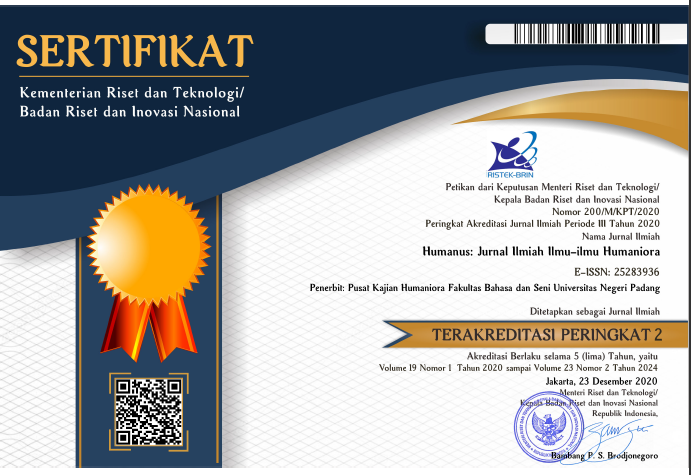TENUN SONGKET PANDAI SIKEK DALAM BUDAYA MASYARAKAT MINANGKABAU
 ),
), (1)
 Corresponding Author
Corresponding Author
Copyright (c) 2016 Humanus
DOI : https://doi.org/10.24036/jh.v13i1.4094
Full Text:
 Language : en
Language : en
Abstract
The art of songket woven handicraft Pandai Sikek is a cultural product of collective creation and traditional heritage Pandai Sikek. Songket first created to meet human needs for traditional ceremonies such as wedding ceremony of Minangkabau. The symbolic meanings in the art of songket are constantly evolving in accordance with the change of time. The art of songket weave Pandai Sikek is one of the traditional handicrafts, which is used for wedding ceremony. In traditional wedding, the groom wears songket for ‘saluak’, ‘sisampiang’, and ‘cawek’, all of them accessories for the traditional costume, while the bride wears gloves, scarves, and tingkuluak, accessories for female constume. The use of songket is customary responsibility and each of the songket patterns contains symbolic meanings. Various decorative patterns of Minangkabau songket are inspired from the concept of "alam takambang jadi guru" (learning from nature). The beauty of songket can be seen visually from the decorative patterns as well as the functions, styles, and structures. Songket handicrafts are able to survive and compete with factory-made textile products. The succes can not ignore the socio-cultural factors that the existence of this woven fabric remained in the middle of the supporting community.
Key words: songket, woven handicraft, traditional wedding ceremony
 Article Metrics
Article Metrics
 Abstract Views : 1300 times
Abstract Views : 1300 times
 PDF Downloaded : 985 times
PDF Downloaded : 985 times
Refbacks
- There are currently no refbacks.
Copyright (c) 2016 Humanus









